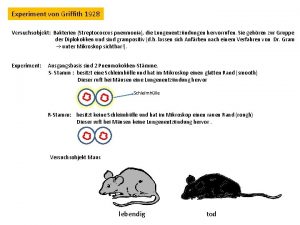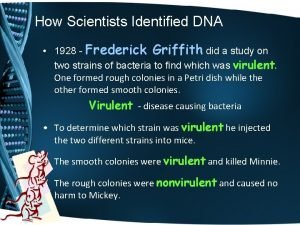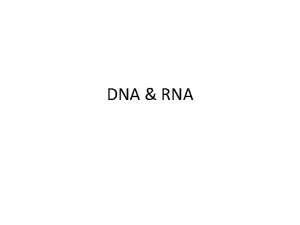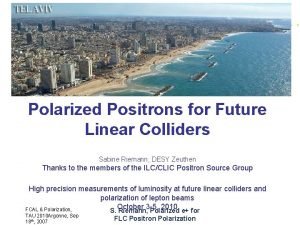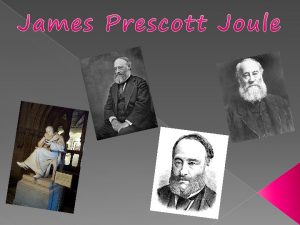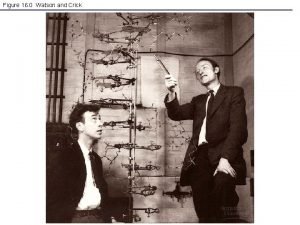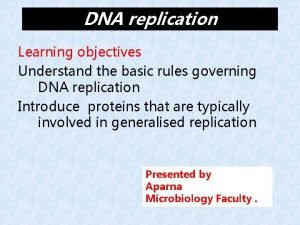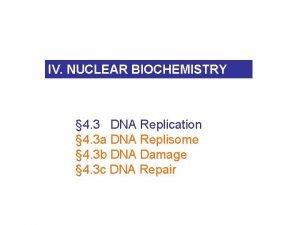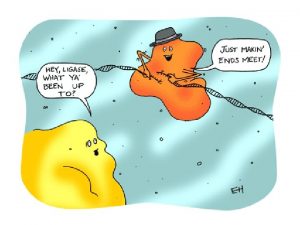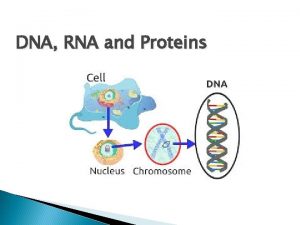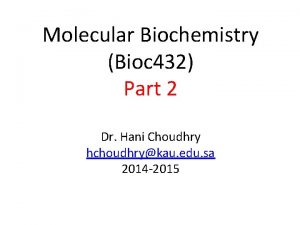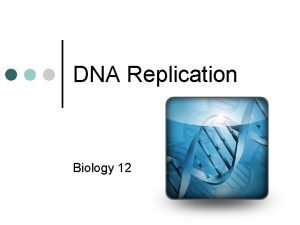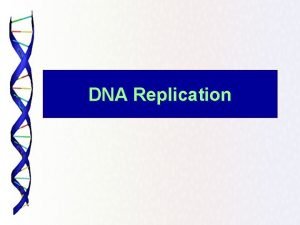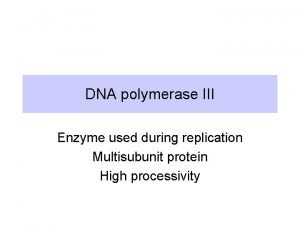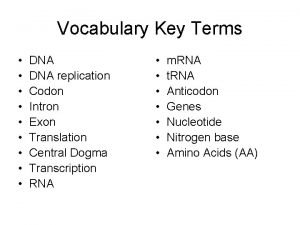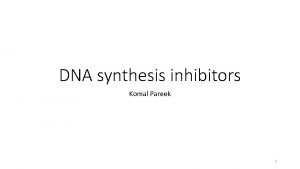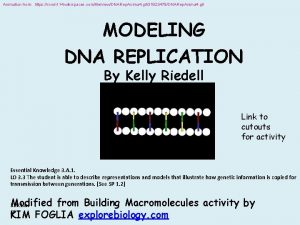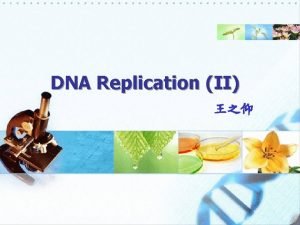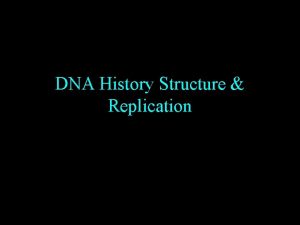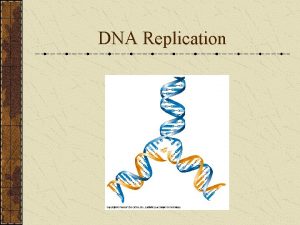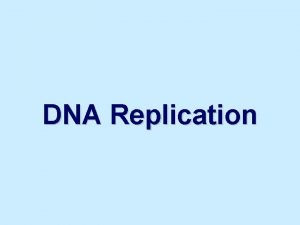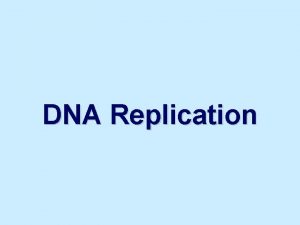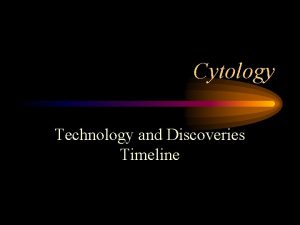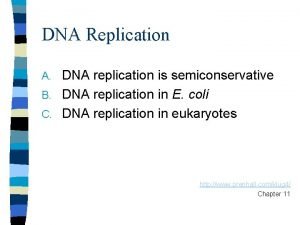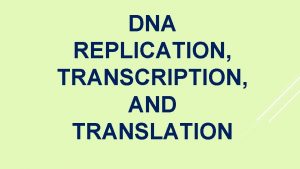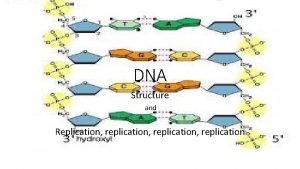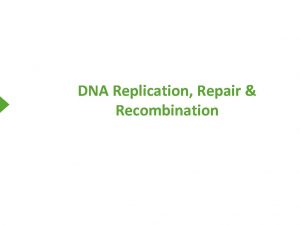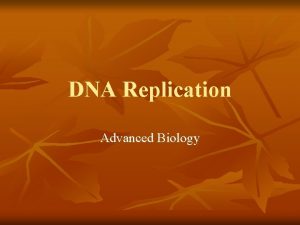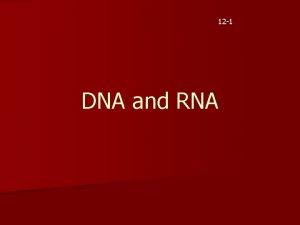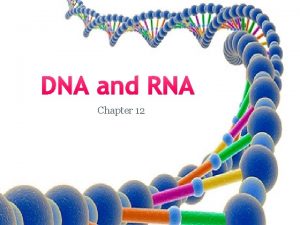DNA Replication Timeline for DNA Discoveries 1928 Griffith



























- Slides: 27

DNA Replication

Timeline for DNA Discoveries • • • 1928 Griffith- bacteria, mice, transformation 1944 Avery- DNA or protein was transformed? 1947 Chargaff- 4 bases in characteristic ratios 1952 Hershey-Chase: Phage & Isotopes 1953 Franklin, Watson & Crick- Helical Structure 1958 Meselson-Stahl: Heavy Nitrogen, replication process semiconservative

Griffith- Bacteria transformed

Avery- protein or DNA is transformed?

Hershey-Chase: Phage, Protein or DNA

Meselson-Stahl

• In DNA replication is semi conservative – The parent molecule unwinds, and two new daughter strands are built based on base-pairing rules T A T A C G C T A T A T G C G C G A T A T C G C G T A T A T A T C G C A G (a) The parent molecule has two complementary strands of DNA. Each base is paired by hydrogen bonding with its specific partner, A with T and G with C. Figure 16. 9 a–d (b) The first step in replication is separation of the two DNA strands. (c) Each parental strand now serves as a template that determines the order of nucleotides along a new, complementary strand. (d) The nucleotides are connected to form the sugar-phosphate backbones of the new strands. Each “daughter” DNA molecule consists of one parental strand one new strand.

Draw nucleotide, extras

Antiparallel Strands

Replication Getting Started: Origins of Replication • The replication of a DNA molecule – Begins at special sites called origins of replication,

Elongating a New DNA Strand • Elongation of new DNA at a replication fork – Is catalyzed by enzymes called DNA polymerases, which add nucleotides to the 3 end of a growing strand New strand 5�end Sugar A Base Phosphate P P A T C G G C A T A OH Figure 16. 13 3�end 5�end T T P Template strand 3�end Nucleoside triphosphate OH 3� end Pyrophosphate P C 2 P 5�end

• DNA polymerases add nucleotides – Only to the free 3 end of a growing strand • Along one template strand of DNA, the leading strand – DNA polymerase III can synthesize a complementary strand continuously, moving toward the replication fork

• To elongate the other new strand of DNA, the lagging strand – DNA polymerase III must work in the direction away from the replication fork • The lagging strand – Is synthesized as a series of segments called Okazaki fragments, which are then joined together by DNA ligase

• Synthesis of leading and lagging strands during DNA replication 1 DNA pol Ill elongates DNA strands only in the 5� 3�direction. 3� 5� Parental DNA 5� 3� Okazaki fragments 2 1 3� 5� DNA pol III 2 One new strand, the leading strand, can elongate continuously 5� 3� as the replication fork progresses. 3 The other new strand, the lagging strand must grow in an overall 3� 5�direction by addition of short segments, Okazaki fragments, that grow 5� 3�(numbered here in the order they were made). Template strand 3 Leading strand Lagging strand 2 Template strand Figure 16. 14 1 DNA ligase Overall direction of replication 4 DNA ligase joins Okazaki fragments by forming a bond between their free ends. This results in a continuous strand.

Priming DNA Synthesis • DNA polymerases cannot initiate the synthesis of a polynucleotide – They can only add nucleotides to the 3 end • The initial nucleotide strand – Is an RNA or DNA primer • Only one primer is needed for synthesis of the leading strand – But for synthesis of the lagging strand, each Okazaki fragment must be primed separately

1 Primase joins RNA nucleotides into a primer. 3� 5� 5� 3� Template strand 2 RNA primer 3� 5� 3 After reaching the next RNA primer (not shown), DNA pol III falls off. DNA pol III adds DNA nucleotides to the primer, forming an Okazaki fragment. 5� 3� 1 Okazaki fragment 3� 3� 5� 1 5� 4 After the second fragment is primed. DNA pol III adds DNA nucleotides until it reaches the first primer and falls off. 5� 3� 5 2 3� 5� 1 DNA ligase forms a bond between the newest DNA and the adjacent DNA of fragment 1. 5� 3� Figure 16. 15 5� 1 DNA pol 1 replaces the RNA with DNA, adding to the 3�end of fragment 2. 5� 3� 6 3� 2 7 The lagging strand in this region is now complete. 3� 2 1 Overall direction of replication 5�

Other Proteins That Assist DNA Replication • Helicase, topoisomerase, single-strand binding protein – Are all proteins that assist DNA replication Table 16. 1

• A summary of DNA replication Overall direction of replication Leading strand Origin of replication Lagging strand Leading strand 1 Helicase unwinds the parental double helix. 2 Molecules of singlestrand binding protein stabilize the unwound template strands. 3 The leading strand is synthesized continuously in the 5�� 3�direction by DNA pol III OVERVIEW Leading strand 5� 3� Parental DNA 4 Primase begins synthesis of RNA primer for fifth Okazaki fragment. 5 DNA pol III is completing synthesis of the fourth fragment, when it reaches the RNA primer on the third fragment, it will dissociate, move to the replication fork, and add DNA nucleotides to the 3�end of the fifth fragment primer. Figure 16. 16 Replication fork Primase DNA pol III Primer 4 DNA ligase DNA pol I Lagging strand 3 6 DNA pol I removes the primer from the 5�end of the second fragment, replacing it with DNA nucleotides that it adds one by one to the 3�end of the third fragment. The replacement of the last RNA nucleotide with DNA leaves the sugarphosphate backbone with a free 3�end. 2 1 3� 5� 7 DNA ligase bonds the 3�end of the second fragment to the 5�end of the first fragment.


The DNA Replication Machine as a Stationary Complex • The various proteins that participate in DNA replication – Form a single large complex, a DNA replication “machine” • The DNA replication machine – Is stationary during the replication process, it is DNA that moves along the machinery.

Prokaryote vs Eukaryote

Proofreading and Repairing DNA • DNA polymerases proofread newly made DNA – Replacing any incorrect nucleotides • In mismatch repair of DNA – Repair enzymes correct errors in base pairing

• In nucleotide excision repair (NER) – Enzymes cut out and replace damaged stretches of DNA – Damage due to radiation, chemicals 1 A thymine dimer distorts the DNA molecule. 2 A nuclease enzyme cuts the damaged DNA strand at two points and the damaged section is removed. Nuclease DNA polymerase 3 Repair synthesis by a DNA polymerase fills in the missing nucleotides. DNA ligase Figure 16. 17 4 DNA ligase seals the Free end of the new DNA To the old DNA, making the strand complete.

Replicating the Ends of DNA • The ends of eukaryotic chromosomal DNA – Get shorter with each round of replication 5� End of parental DNA strands Leading strand Lagging strand 3� Last fragment Previous fragment RNA primer Lagging strand 5� 3� Primer removed but cannot be replaced with DNA because no 3�end available for DNA polymerase Removal of primers and replacement with DNA where a 3�end is available 5� 3� Second round of replication 5� New leading strand 3� New lagging strand 5� 3� Further rounds of replication Figure 16. 18 Shorter and shorter daughter molecules

• Eukaryotic chromosomal DNA molecules – Have at their ends nucleotide sequences, called telomeres, that postpone the erosion of genes near the ends of DNA molecules Figure 16. 19 1 µm

• If the chromosomes of germ cells became shorter in every cell cycle – Essential genes would eventually be missing from the gametes they produce • An enzyme called telomerase – Catalyzes the lengthening of telomeres in germ cells

Minor and major grooves • Allows for accessibility to the bases
 Bioflix activity dna replication dna replication diagram
Bioflix activity dna replication dna replication diagram Versuch von griffith ergebnis
Versuch von griffith ergebnis Griffith 1928
Griffith 1928 1928 griffith
1928 griffith Dna polymerase function in dna replication
Dna polymerase function in dna replication Dna rna protein synthesis homework #2 dna replication
Dna rna protein synthesis homework #2 dna replication Dna and rna structure
Dna and rna structure Sabine riemann
Sabine riemann Stonehenge
Stonehenge What did james prescott joule discover
What did james prescott joule discover Methods to avoid false discoveries in data mining
Methods to avoid false discoveries in data mining 3 models of dna replication
3 models of dna replication Dna
Dna Where is the site of dna replication in eukaryotes
Where is the site of dna replication in eukaryotes Chapter 13 the molecular basis of inheritance
Chapter 13 the molecular basis of inheritance Dna replication comic strip
Dna replication comic strip 5 enzymes responsible for dna replication
5 enzymes responsible for dna replication Dna replication fork
Dna replication fork The principle enzyme involved in dna replication is called
The principle enzyme involved in dna replication is called Dna replication jeopardy
Dna replication jeopardy Summary of dna replication
Summary of dna replication Tata box
Tata box Dna replication
Dna replication Forms of dna
Forms of dna Dna replication
Dna replication Nucleoside triphosphate in dna replication
Nucleoside triphosphate in dna replication Dna structure and replication packet answer key
Dna structure and replication packet answer key Replication fork of dna
Replication fork of dna

